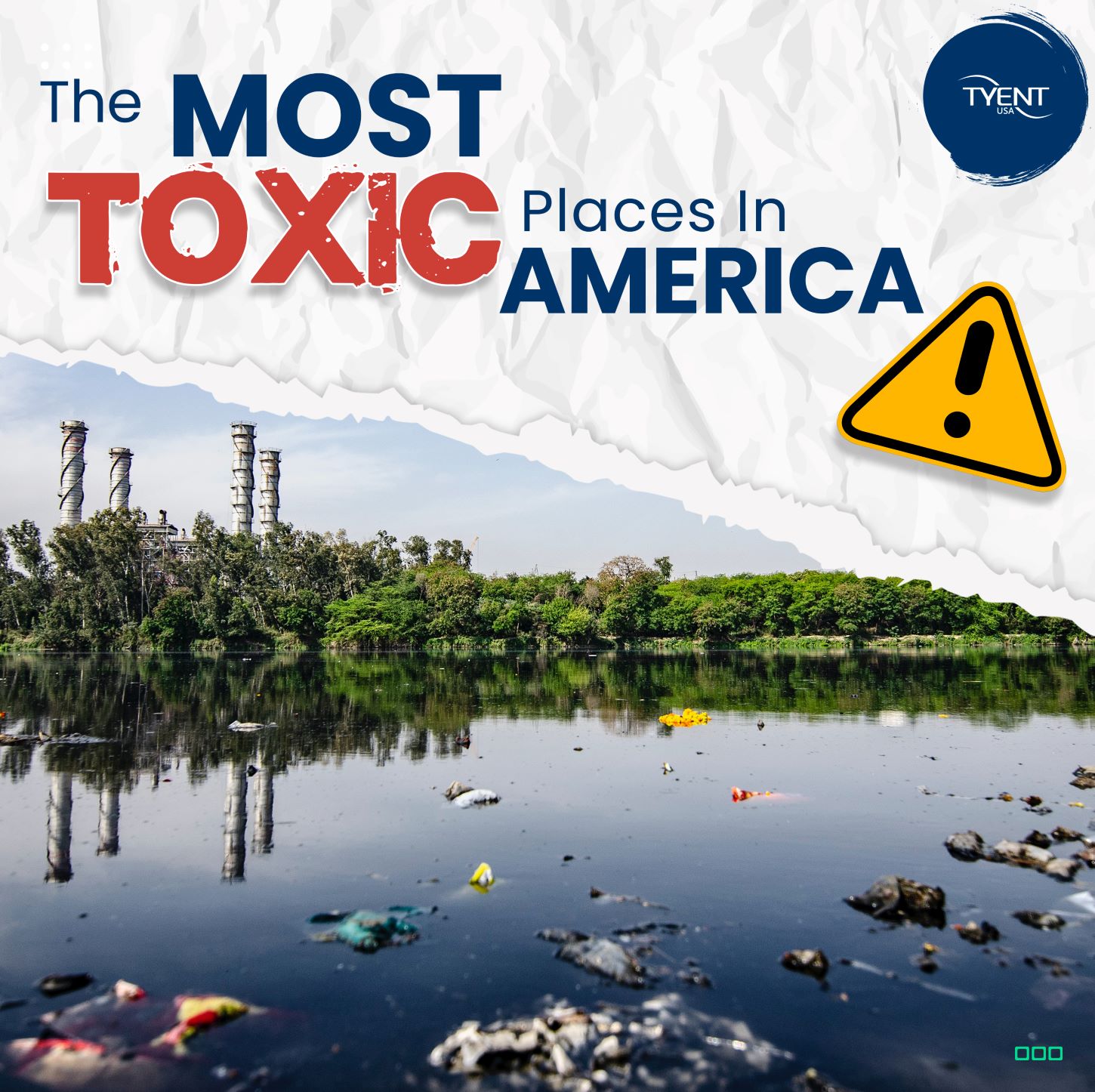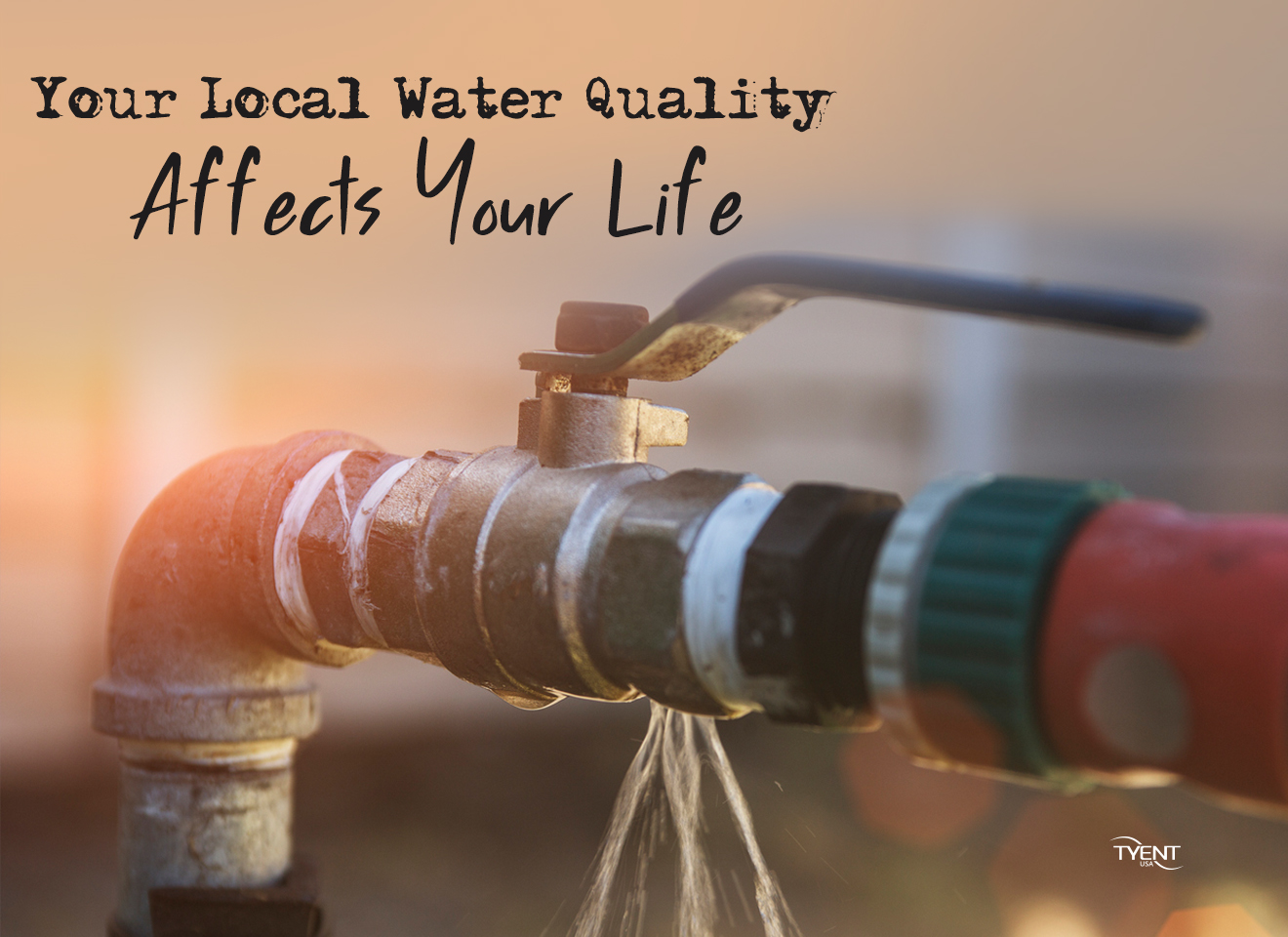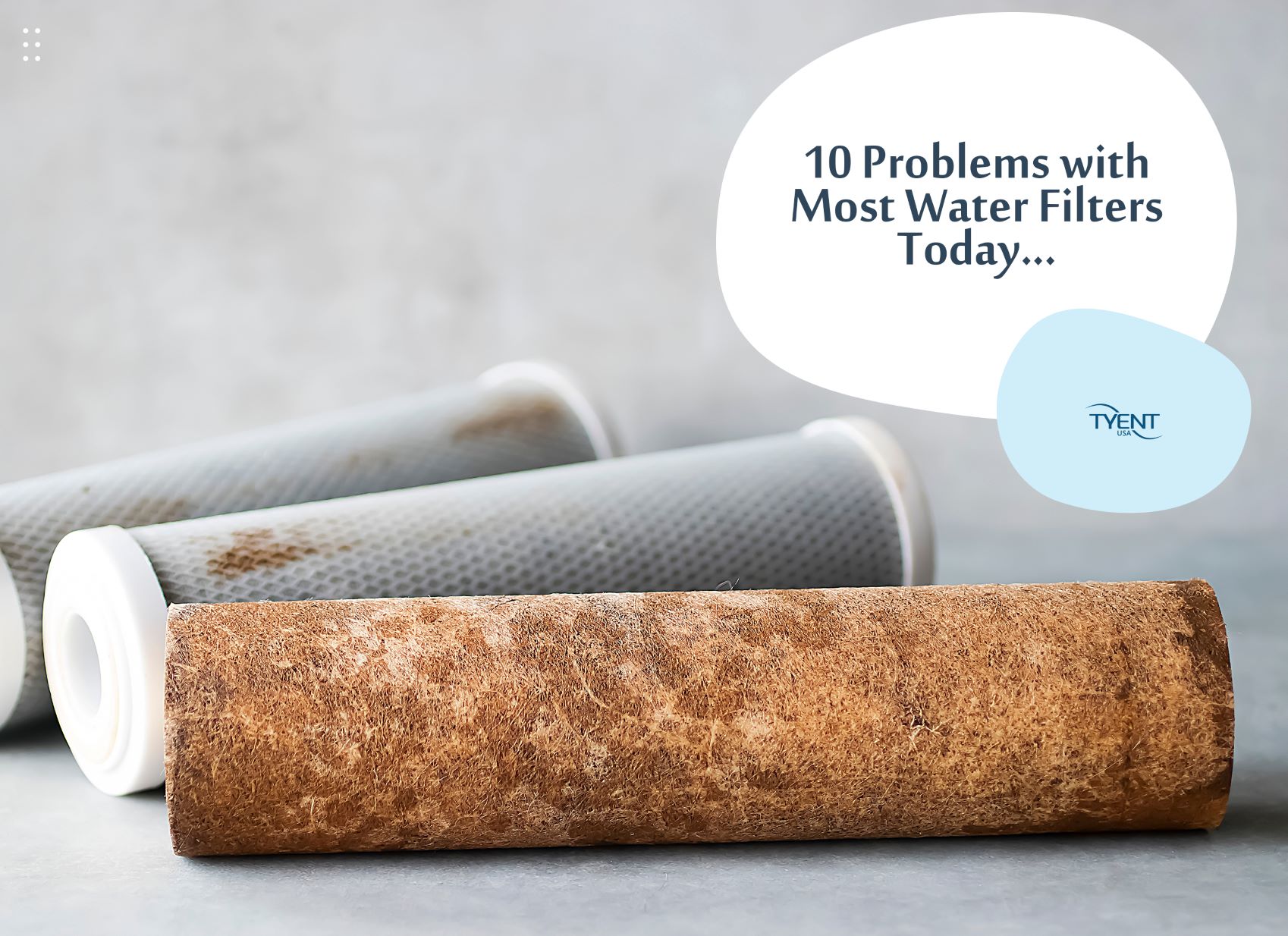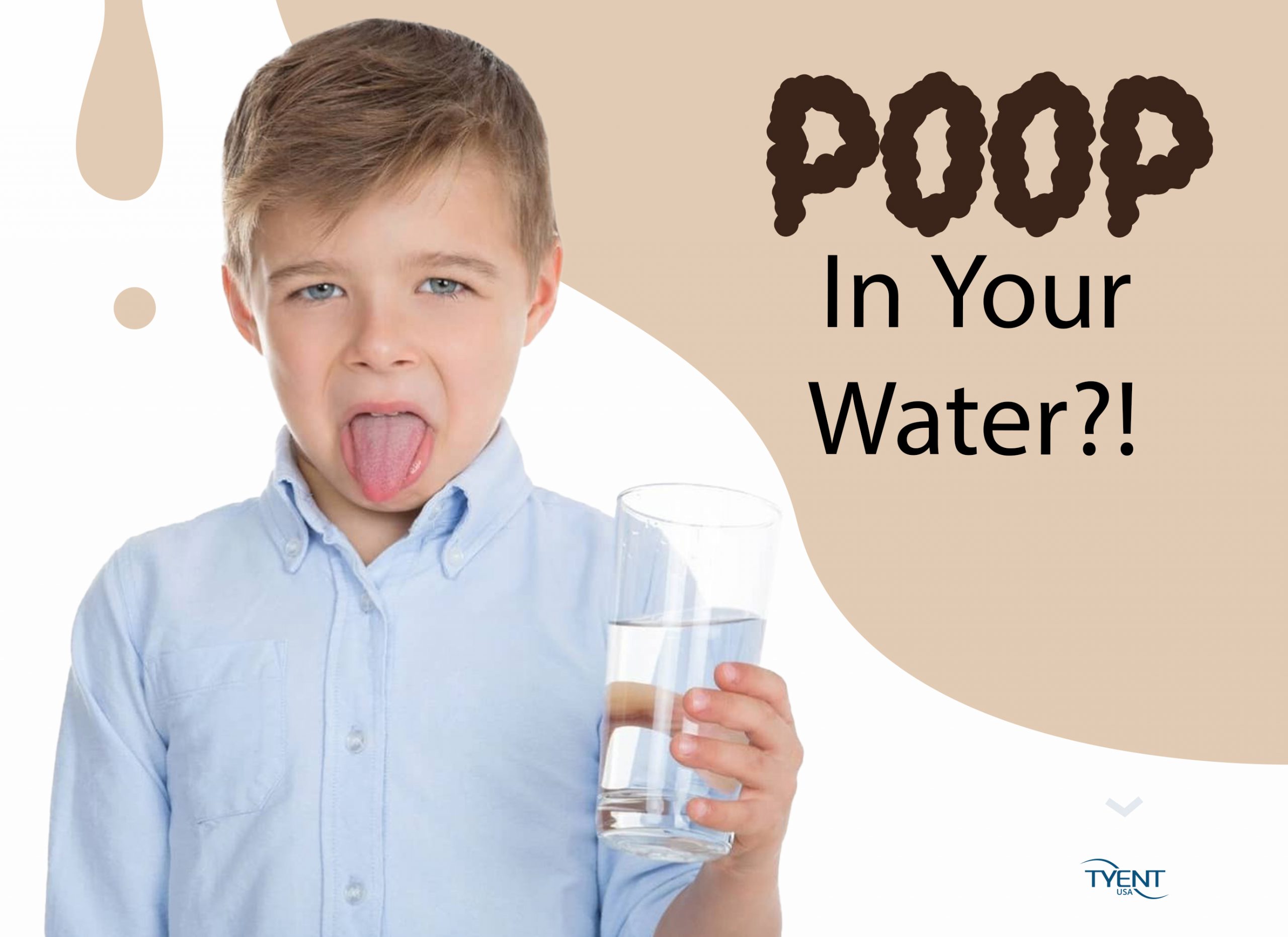Where you live in America makes a big difference to the air you breathe and how toxic your water and immediate environment is.

Pollution and the Deadly Data – Where We Are Now
So, where are the most – and least – toxic places in America? The Environmental Protection Agency (EPA) has been monitoring and assimilating data for decades to track how each state is doing. Air pollution, industrial pollutant disposal and the standard of municipal drinking water are some of the main factors under the microscope.
Let’s do the good news first. If you live in Hawaii, then you probably already know that you live in a place with a pretty fantastic natural environment. Likewise, much of New England scores well, with Rhode Island, Massachusetts, Vermont and New Hampshire all featuring in the top 10 least toxic places to live.
Fast Facts: The 50 Most (and Least) Toxic States in America
Here’s a handy, at-a-glance check list of the 50 most – and least – toxic (air and water quality) places to live in America, according to the EPA, listed from cleanest (1) to most toxic (50). Some of the entries might surprise you!
- Hawaii
- New Hampshire
- South Dakota
- Massachusetts
- New York
- Nebraska
- Rhode Island
- North Dakota
- Vermont
- Minnesota
- Maryland
- Idaho
- Wyoming
- Maine
- Washington
- Kansas
- Wisconsin
- Florida
- Virginia
- Iowa
- Missouri
- Mississippi
- Colorado
- Montana
- Georgia
- South Carolina
- North Carolina
- Connecticut
- Kentucky
- Arkansas
- New Mexico
- Michigan
- New Jersey
- Oklahoma
- California
- West Virginia
- Alabama
- Pennsylvania
- Tennessee
- Texas
- Arizona
- Oregon
- Illinois
- Ohio
- Delaware
- Alaska
- Utah
- Indiana
- Louisiana
- Nevada
Is YOUR State Putting Your Health at Risk?
If your home state is somewhere in the lower half – or towards the bottom – of this list, then you might reasonably feel concerned about the air quality where you live, and whether your drinking water is safe for you and your kids to enjoy.
It’s reasonable to be concerned about it: part of the EPA’s evaluations and ranking of the most and least toxic places in America focus on the health of citizens. For example: what is the air quality like in urban areas? What is the total toxic load from chemical pollutants per square mile? The numbers are important – each factor contributes to the overall risks of environmentally linked chronic health issues for the citizens of each state.
The devil really is in the detail with the EPA’s statistics. For example, to measure air quality, it is necessary to consider the various factors that contribute to airborne pollution, including:
- Carbon Monoxide
- Lead
- Nitrogen Dioxide
- Ozone
- Particulate Matter
- Sulfur Dioxide
Is Your Water Toxic?
Water quality is obviously a huge concern for millions of people across America. Unsurprising really – thousands of miles of waterpipes and waterways that cross the country are in a desperate state of disrepair. There are cast-iron pipes in roughly 600 towns and counties that are more than 100 years old. Up to 10 million homes across the country still rely on water that is supplied by lead pipes.
Where pipes are damaged, contamination occurs. But that’s okay, because the water treatment plants will take out the dangerous stuff before we drink it, right? Wrong. As a rule, water treatment facilities built years before the widespread use of the new-generation, highly toxic PFAS chemicals are ill-equipped to deal with this deadly risk. Exploding population centers and new, increasingly health-threatening containments in the water system mean that a patch-it-up, retrofit approach is completely inadequate.
How to Protect Your Family in a Toxic Environment
So, what can you do to protect your family’s health, particularly if you live in one of the most toxic places on the EPA list?
Think about it from the point of view of aiming to reduce your toxic load. You have few options when it comes to meaningfully changing the air quality where you live, (although we can all do our bit, with cutting out unnecessary car journeys and so on). So, look at what is within your power to change, in order to minimize environment-linked health risks.
How to Drink Clean, Safe Water in a Toxic State
Switching the water you and your family drink is one of the most immediate and practical ways of cutting down – or cutting out – on waterborne toxins. Filter jugs are better than nothing but can’t tackle the most lethal contaminants frequently found in tap water.
Reverse osmosis water machines are adequate in the short term, but in the long term, carry their own risks: the vital minerals needed by your body are removed along with the toxic elements.
Drinking ionized alkaline water from a water ionizer is the perfect solution – especially if your tap water is a worry. Tyent water filters remove over 200 contaminants – including over 99% of deadly lead – but crucially, leave the minerals in the water intact and bioavailable. Whatever is in your source water, a Tyent Water Ionizer will transform it into healthful, delicious drinking water, while infusing it with naturally occurring molecular hydrogen. Why is that such an amazing thing? Check out this list of benefits to find out!
Want to Make a Healthier Choice for Your Family’s Wellbeing? Start Here!
The first step is to find out exactly what’s in your water: click here for a FREE water report. Once you have your water report, call up one of our water ionizer experts to find out which water ionizer is right for you.
Our award-winning team can advise on any pre-filters you need to deal with the unique cocktail of contaminants present in your source water. Even better, we have some truly amazing deals on water ionizers right now. So, whether you live in the most – or least – toxic place in America, there’s never been a better time to start drinking clean, safe and delicious alkaline hydrogen water!










